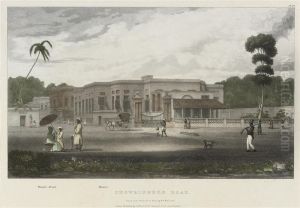William Wood Di Calcutta Paintings
William Wood, also known as William Wood of Calcutta, was an English artist who found fame in India during the British colonial era. Born in 1788, Wood's early life is somewhat obscure, but it is known that he developed a strong foundation in art before his travels to India. His move to Calcutta (now Kolkata), the then capital of British India, marked the beginning of his significant contribution to the art scene in the subcontinent.
Wood became renowned for his miniature paintings, a genre that was very popular in the late 18th and early 19th centuries among the British and Indian elite. His work often featured portraits of notable figures of the time, including British officials, Indian royalty, and the affluent members of society. Wood's style was characterized by a meticulous attention to detail and a commitment to capturing the likeness and character of his subjects.
In Calcutta, Wood established himself as a leading artist of his day, receiving numerous commissions and enjoying the patronage of high-profile clients. Despite the popularity of his work in India, Wood's international recognition during his lifetime was limited compared to other artists. However, he left a lasting legacy in India, influencing a generation of artists and contributing to the cultural exchange between Britain and India through his art.
Wood's contributions were not limited to portraiture. He also painted landscapes and scenes from everyday life, providing a visual record of the social and cultural milieu of colonial India. His works serve as important historical documents that offer insight into the period's aesthetics and the colonial experience.
William Wood of Calcutta passed away in 1850, leaving behind a rich collection of artworks that continue to be studied and appreciated for their historical value and artistic merit. His paintings are held in various collections, including those of museums and private collectors, and they continue to be the subject of scholarly research, contributing to our understanding of the cross-cultural artistic dynamics of the British Raj.
